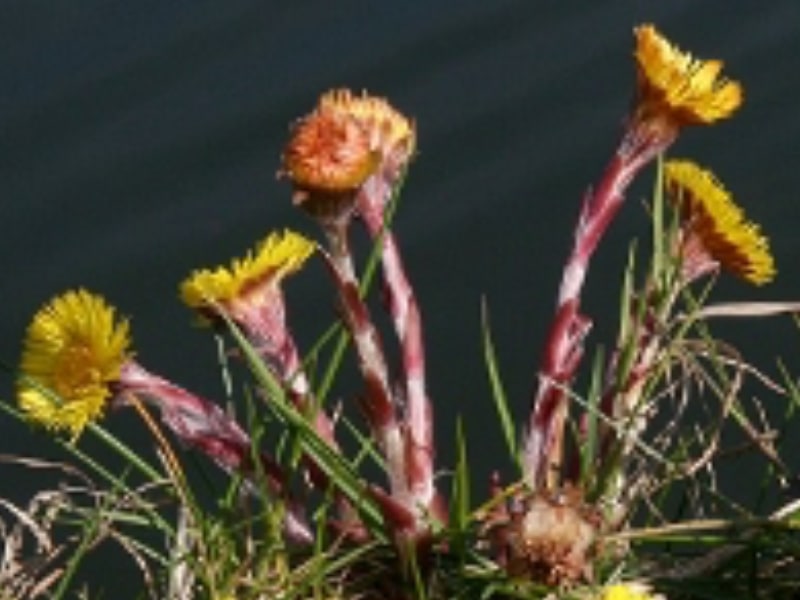Sweet Violet

The translation of Viola odorata, the Latin name for the herb of the month, is “scented violet”; to me it is sweet, sweet violet. This shy little plant brings back beautiful childhood memories, picking a posey for my mum at Easter – indulging in the heady, sweet smell of violets takes me back instantly to the stream bank where I knew I would find a healthy crop.
Willow

There are 400 willow species in all, white willow being the most common, but herbalists prefer to use species such as purple osier, crack willow and violet willow, for they contain more salicin – the active compound found in all willows.
Coltsfoot

February is the month in which to collect and dry coltsfoot flowers. They are best gathered for herbal medicine before they have fully bloomed, which occurs from the end of February to April. Coltsfoot’s mediaeval name was Filius ante patrem, which means son-before-father and refers to its unusual habit of the flowers appearing long before the leaves which don’t appear until April/May. The yellow flowers are borne on scaly purplish stems, and are a welcome sight on the barren ground of winter.
Oregon Grape

Looking out across the bleak, sleepy, wintry Devon countryside, I was looking for some inspiration for this month’s herb and the first for 2023; nothing came to me, since all the berries are gone, as are most leaves and flowers, and roots won’t be collected until February. So it wasn’t until I took a trip into my hometown of Honiton that it came to me. I had literally stepped out of my car and into the town centre carpark and there it was! Big, bright, beautiful and in flower!
Mistletoe

Welcome to my first herbal blog. Each month, I plan to introduce a different medical plant which can be gathered in that particular month. I will share with you its medical value and – where appropriate – its folklore history, culinary uses and any other useful tidbits I may come across. The idea behind this is to bring to light the amazing wealth and use of the plants which we are privileged to have right here on our doorstep.
